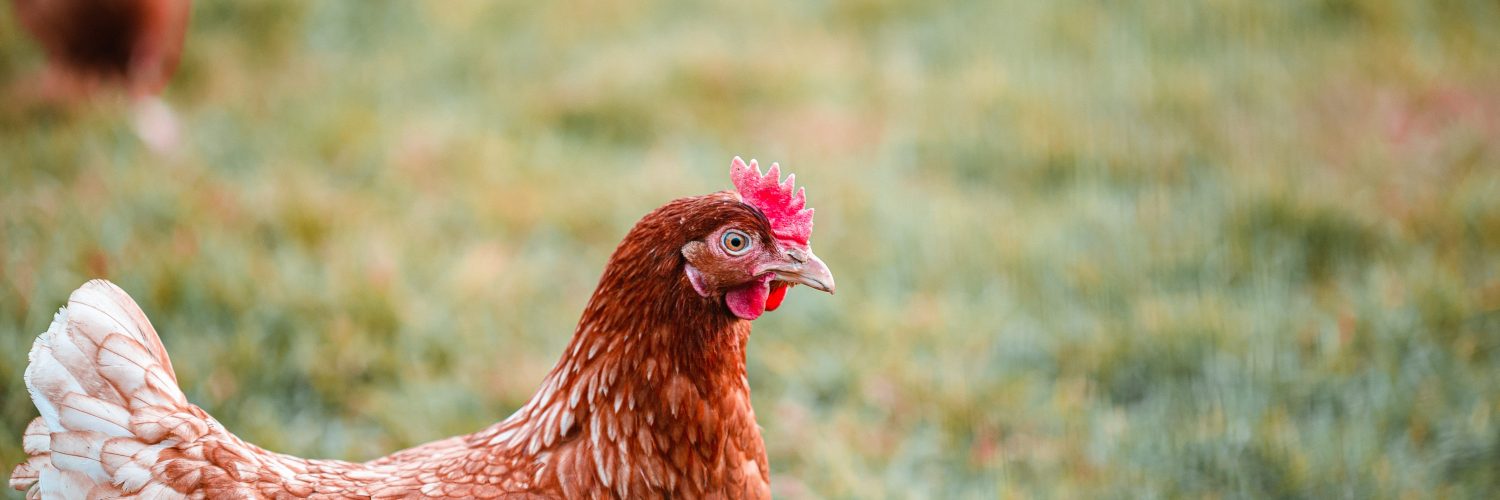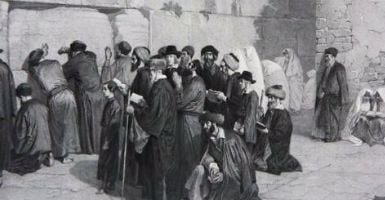In this essay, we will deviate from our usual discussions of practical Halachic questions. Instead, we will review a fascinating historical Halachic debate that integrated Halachic and medical sources, embroiled several famous 18th-century Gedolei Yisrael, and was among the causes of one of the most famous and painful disputes between the Gedolei Yisrael Rabbi Yehonasan Eibeschutz and Rabbi Yaakov Emden, Zecher Tzadikim l’Vracha.
It all began with a question addressed to the Chacham Zvi[1]. A girl was cleaning a slaughtered chicken as she readied it for cooking. She placed the chicken on the table, at the foot of which stood a hungry cat. She opened the chicken’s abdomen and removed the intestines, throwing them to the cat. When she next turned her attention to the chicken she was amazed to discover that it had no heart.
As is customary among Jews, she hurried with the chicken to the Chacham Zvi, and told him that it had been a fat, healthy chicken. She also stated that she was certain that the heart had not fallen out of the chicken and consumed by the cat along with the intestines. The chicken had clearly never had a heart.
At face value, this question should have been resolved in accordance with one of the simplest Halachosin Hilchos Treifos. The Shulchan Aruch (Y.D. 40) clearly states: “If the heart is removed – it is a Treifa!”
However, the Chacham Zvi declined to rule this way. He argued that it was impossible to contend that the chicken had never had a heart; no animal can live for even a short period without a heart. Inevitably, despite the girl’s statements to the contrary, its heart must have dropped out of its body when the abdomen was opened, and the cat must have eaten it. Hence, he ruled that the chicken was not a Treifa. The Halacha which states “if the heart is removed it is a Treifa” refers specifically to a chicken whose heart was cut out immediately before it was slaughtered. If we open an animal and fail to find a heart, we must assume that it fell out without us noticing. The Chacham Zvi labeled those who argued otherwise “fools.”
As support for his position, the Chacham Zvi cited the Kesef Mishne’s interpretation of the Rambam’s omission of the law “If the heart is removed – it is a Treifa” from Mishne Torah (Hilchos Shechita, Chapter5); namely, that the Rambam does not include anything that an animal could not live without. The Chacham Zvi also cited the Zohar (Pinchas, 221b) which relates that Eliyahu haNavi told R’ Eliezer that animals cannot live for a single moment without a heart: “It is not that I adjudicate Halachic matters from the Zohar, but this matter is evident at first glance and the truth testifies for itself, and G-d forbid that one should have the heart to disagree upon such things, and those who disagree speak without heart…”
This ruling provoked strong opposition from many of the Gedolim of the generation. Rabbi Moshe of Rothenberg, one of the Chacham Zvi’s colleaguesin the Rabbinate of theAH”U communities,[2] wrote a scathing Teshuva in which he rejected outright the opinion of the Chacham Zvi, concluding that “there are no grounds in the world to take the side that this is Mutar… To permit this is as though to proclaim that the Torah is true with the exception of this law, as all the early and later Poskim have already ruled that if the heart is removed it is a Treifa“.
With regard to the Chacham Zvi’s factual argument that it is physically impossible for an animal to live without a heart, he proposed:
Even though a young child who is neither intelligent nor foolish knows that it is impossible for a living creature to have no heart, nevertheless this Halacha could be realized in practice. It could be that the heart shrunk and dissolved little by little due to disease until it fully disappeared in the moment immediately prior to the Shechita.
It is interesting to note the lengths to which Rabbi Moshe of Rothenberg was willing to go so as not to reject the position of Chaza”l and the Poskim that there an animal without a heart could be a reality.
The controversy was not contained within the AH”U communities; it proliferated among the Gedolei Yisrael of the generation. The Chacham Zvi sent out letters to two of the Gedolim, who were also his Mechutanim, in the hope that they would defend his ruling. The first was to Rabbi Naftali Katz of Frankfurt who replied with a letter of support in Sivan 5469 (May 1709). In his letter, he told of a Dayan from his community who showed him the glosses written in the margins of his Shulchan Aruch that had been authored by several past Gedolim of notable Halachic authority. They revealed that a similar incident had occurred in the times of the Maharal of Prague (Rabbi Naftali Katz’s grandfather), and his ruling and reasoning were identical to those of the Chacham Zvi. The second letter was addressed to Rabbi Meir of Eisenstadt, the author of the work “Panim Me’iros“. He, however, did not agree with his Mechutan, the Chacham Zvi. In his Teshuva (printed in Panim Me’iros 1:23; see also 1:24and 2:184),he maintained that it is impossible to permit that which is expressly forbidden by the Poskim.
Among the writings of the Gedolim on this subject was an anonymous pamphlet published against the Chacham Zvi’s ruling. The Chacham Zvi mentions that he received a pamphlet from “a particular Chacham” and goes to elaborate lengths to rebut the objections raised therein, but he does not specify who the Chacham was. For many years curious scholars attempted to find out who the Chacham that the Chacham Zvi took so seriously was. The late Rabbi Reuven Margalios zt”l, a librarian at the Rambam Library in Tel Aviv and an exceptionally well-versed Talmid Chacham, discovered the original handwritten manuscript of the pamphlet. He revealed that its author was none other than Rabbi David Oppenheim – the rabbi of Prague, author of the “Shu”t Nishal David“, and revered as the Gadol haDor of the time.
Rabbi Oppenheim reviewed the arguments of the Chacham Zvi and rejected his line of reasoning. Among other things, he states that the Zohar’s comment was not intended to establish the factual aspects of animal biology, and that the words of the Kesef Mishne are debatable. In the midst of his exposition, he takes a fascinating position in relation to the Chacham Zvi’s premise that an animal cannot live without a heart. Rabbi Oppenheim maintains that life is dependent on the brain and not on the heart. He references the work Sha’arey Shamayim authored by the Ralbag’s father, the majority of which was compiled from the “Sefer haNefesh” of the Rambam. In Sefer haNefesh, the Rambam determines that movement is sourced in the brain, proving his point with, among other things, the following anecdote, “Once I had a monkey and its heart was removed and it moved for another twelve hours”.
As mentioned above, the Chacham Zvi wrote at length to counter his arguments (see Shu”t Chacham Zvi 77). He restates his position that the “life-giving force” resides in the heart, thus an animal without a heart would not only be a Treifa, but it would also be a Neveila (a dead animal whose life ended by means other than Shechita). He claims that the Arizal also held this position. As for the evidence from the Sha’arei Shamayim, the Chacham Zvi contends that Rabbi Oppenheim mistakenly assumed that all the words of the Sefer haNefesh are sourced in the Rambam, when. in fact. the sections of the work concerning the natural sciences are sourced in the writings of the famous 1st-century Greek physician Galen. In fact, the Rambam followed Aristotle in disagreeing with Galen, maintaining that the source of life is in the heart, not in the brain. Even if one is to claim that the brain is the source of movement, the heart is the source of life.
This Halachic-scientific debate gained significant momentum and publicity when Rabbi Meir of Eisenstadt’s disciple entered the scene, a young Avrech, 22 years of age, who would later rise to fame throughout the Jewish world – Rabbi Yehonasan Eibeschutz.[3] In addition to his Halachic inquiries, he requested the professional scientific-medical opinion of the scholars at the University of Halle on the question at hand: Is it possible for an animal to live without a heart?
His appeal to the scientists is particularly interesting in light of his own rejection of the Chacham Zvi’s claim that we know empirically that no animal can live without a heart. Rabbi Yehonasan disagreed, arguing that there is no tradition in Halacha for making claims substantiated “only on a basis of nature and empirical reality.” Without a precedent, such a claim does not have the legitimacy to reject the words of Chazal. On the contrary, we must learn from instances such as this not to rely on the “reality of nature” when it contradicts the tradition of Halacha.
In particular, he stated:
Consider that this used to be among the foundational principles of scientists who relied upon empirical evidence to reach consensus. But when people came and observed the opposite – they backed down from their consensus and invented another rule. And by now,
using empirical means, they have literally withdrawn from all the assumptions of Galen, Aristotle, and the like, and have chosen new foundations and assumptions. If so, will we refute the testimony of the witnesses and permit the certain or possible prohibition of Treifa on the basis of natural principles!?
Despite his disregard and disparagement of scientific knowledge, Rabbi Yehonasan presents the full response of the physicians of Halle “for the sake of clarity, for this is Torah, and there should be no deficiencies when working on Heaven’s behalf“:
After we received two questions – we do not know what prompted them – and a medical inquiry was requested of us here in this university to answer in accordance with the principles of the disciplines of medicine and surgery (i.e., anatomy), we gathered together, and, after researching and seeking advice, we agreed on this answer:
The first question is whether it is possible for any type of animal to live for some time after its heart has been removed, whether by disease or by any other cause. First, it should be known that according to medicine there is absolutely no means or possibility for a heart to be removed by disease. Yes, it is true that sometimes sickness can reach the heart itself, and our experience shows that sometimes the heart is [affected by the disease to the extent that it becomes] exceedingly soft and weak. Moreover, foreign organisms can also be found inside it (like the “Palopus” insect). Sometimes [the heart] is found to be liquefied on the outside. It has also been found with damaged tissue as though it was burned in fire, caused by [substances] absorbed in the blood [coursing through the] body’s veins and arteries. Similarly, [cardiac] tissue was found with small blisters on its outer surface.
However, in all these cases, [the heart] was fixed as a stake, in its rightful place in the chest, it will not move from its place, and it will not be completely dissolved or destroyed – which is impossible. A living being that contracts this heart disease will continue to live as long as the disease does not increase in severity to the extent that its movement – which is the source of life – is completely eliminated. But if the disease overpowers it and the movement ceases, the creature that contracted this disease will surely die.
It is therefore clear, that if it were possible for a heart to be completely removed in any way, in other words, that it would become completely devastated and destroyed, the living creature would not be able to stay alive for even one moment, just as no creature could live were its heart removed from it due to an act of violence or through cutting it out from within. Rather, [the creature] will die immediately or in very little time following the heart’s removal, for inevitably the blood will gush out quickly and abundantly like a flowing stream.
As for the second question, regarding a bird that was opened up (such as a chicken or goose) and no heart is found in it; can we say that another organ developed in its place in the area of the heart that can perform the function of the heart, thus allowing the bird to live even though its heart has been removed? We will introduce our response with this principle: There cannot exist in nature any living creature, whether a bird or an animal,
which will live without a heart, or at least some organ or active flesh with a form and makeup similar to that of the heart. That is, an organ with a cavity and veins and spouts suitable for the movement of blood and its circulation. Therefore, should there be one such organ in figure and form, with two cavities, two “ears”, and two veins and arteries suitable for the movement of blood as aforesaid, it is possible that this animal or bird would live and survive for a long time, even if the external shape of this organ is not similar to the external shape of the heart. And even if it should be found elsewhere in the chest, whether above the seat of the heart or below it or on the other side from where it is normally positioned. We have all agreed on this and attach our signatures as evidence.
It is apparent from the doctors’ response that Rabbi Yehonasan had raised the hypothetical possibility that an organ other than the heart could substitute for the heart, adequately perform its roles, and enable an animal to survive (even if it could not live for twelve months and would hence be classified as a Treifa). The doctors of Halle accepted his hypothesis and agreed that it was theoretically possible, but only if the alternate organ would comprise a network of arteries and veins to enable continued blood flow in a similar fashion to the heart. Should this be the case, even if the organ’s overall shape would not resemble the heart, or if the organ occupied a position other than the one typically occupied by the heart, “it is certainly possible that this animal or bird would live and survive for a long time.”
Rabbi Yehonasan used this possibility to resolve the fundamental question of the Chacham Zvi – how it is possible for an animal to live without a heart? In this original way he explained that it is conceivable in a case that the animal is equipped with a “heart substitute” that does not have the appearance of a heart. With regard to this possibility it is ruled in Halacha, “If the heart is removed – it is a Treifa“. In other words, if we find no heart, we can assume that the animal has a heart substitute in another location which looks nothing like a heart. Although this heart substitute would be insufficient to prevent the animal from becoming a Treifa, it would nonetheless explain why it had some capacity for continued living in the absence of a heart.
Rabbi Yehonasan’s remarks made a name for themselves throughout the European Jewish world. Rabbi Yehonasan did not content himself with recording his position in writing; he went to the effort of publishing them. Shortly afterwards, and as a result of the ensuing storm, the Chacham Zvi was forced to resign from the Rabbinate of the AH”U communities. It was some time before he was eventually accepted as the rabbi of Amsterdam. (In the year 5519, Rabbi Yehonasan himself was admitted to the Rabbinate of the AH”U communities). The Chacham Zvi’s son, Rabbi Yaakov Emden, known as the “Ya’avetz“[4], seethed with righteous indignation over the mistreatment of his father. He was unwilling to forgive Rabbi Yehonasan Eibeschutz for his actions. In several places he sharply criticizes Rabbi Yehonasan’s steps in this debate. Stinging remarks that are not germane to our discussion can be found in his work She’eilas Ya’avetz 2:146.
This controversy took a dramatic turn for the worse several years later, when Rabbi Yehonasan Eibeschutz was already considered one of the Gedolei haDor. As is well known, Jewish communities the world over were rocked in those times by the destructive consequences of the false messiah, Shabtai Zvi. Even after his death, his influence continued to be manifest – both openly and discreetly – in his followers, who maintained their belief in him and his strange, mystical theories. The Gedolei haDor of that generation worked determinedly to uproot all Sabbatean influence, taking a heavy-handed approach towards anyone suspected of Sabbateanism. One of the greatest warriors in this arena was Rabbi Yaakov Emden. Upon coming into possession of some amulets written by Rabbi Yehonasan, Rabbi Yaakov became convinced that Rabbi Yehonasan was infected with Sabbateanism. Rabbi Yaakov, out to avenge the honor of Hashem, shook the world for seven years as he denounced Rabbi Yehonasan. For his part, Rabbi Yehonasan responded with silence (aside from a pamphlet of approbations from some of the Gedolei haDor who attested to his righteousness, including the young Vilna Gaon), but his students and admirers retaliated. Soon, all of Europe drowned in this terrible controversy, which in the opinion of many caused immense spiritual damage and was one of the causes of the subsequent spread of the Haskala. According to many, the origin of Rabbi Yaakov Emden’s mistrust of Rabbi Yehonasan was rooted in the earlier controversy over the “missing heart.”
In any event, we must bear in mind that both Rabbi Yaakov Emden and Rabbi Yehonasan Eibeschutz were among the outstanding Gedolei Yisrael of recent generations, and their disagreement was surely devoid of bias and self-interest. It stemmed from righteous indignance for the Halacha and the name of G-d. As Gedolim havesuggested many years later, Rabbi Yaakov and Rabbi Yehonasan are surely sitting together peacefully and tranquilly in the same partition in Shamayim, as befits Talmidei Chachamim. After all, their intentions were l’Shem Shamayim. But as for those around them who ignited the controversy – they inherited Gehinom.
[1] R’ Tzvi Hirsch Ashkenazi (1656-1718), father of R’ Yaakov Emden.
[2] The three distinguished Ashkenazic communities of Altona, Hamburg and Wandsbek (AH”U) united beneath one common Rabbinate.
[3] His position was publicized many years before it was formally printed in his work Kreisi u’Pleisi 40.
[4] An acronym of “Ya’akov Emden ben Tzvi”














